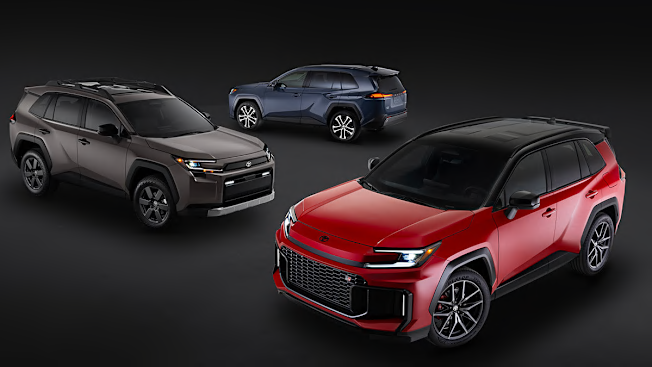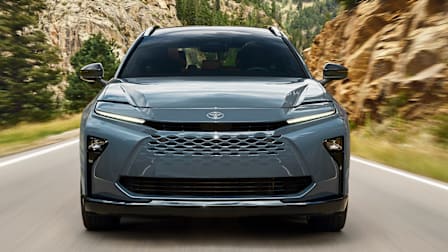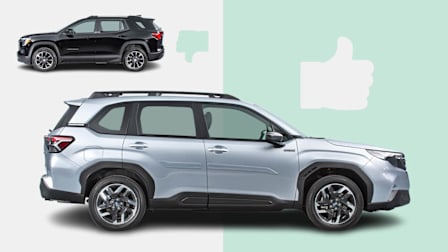Preview: 2026 Toyota RAV4 Is All Hybrid With More Power and Tech
The next-gen SUV boasts the latest infotainment and safety features
The redesigned 2026 Toyota RAV4 is offered strictly as a hybrid and a plug-in hybrid. It introduces new trim levels and steps up its game for comfort, convenience, and safety.
The RAV4 pioneered the modern small SUV, with its first-generation 1996 model showing how car-based platforms could “cross over” to create SUV-like shapes with more refinement than the truck-based vehicles of the era provided. The concept stuck, inspiring legions of imitators, and over time, crossovers dominated American roads. As a testament to Toyota’s vision, the RAV4 has become not only the most popular small SUV but also the most popular passenger vehicle in the U.S., with 475,000 sales in 2024.
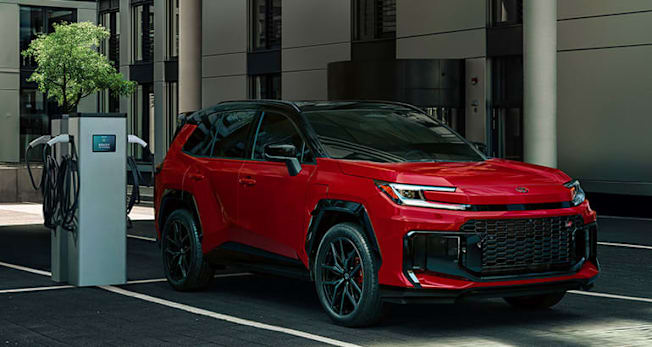
Photo: Toyota Photo: Toyota
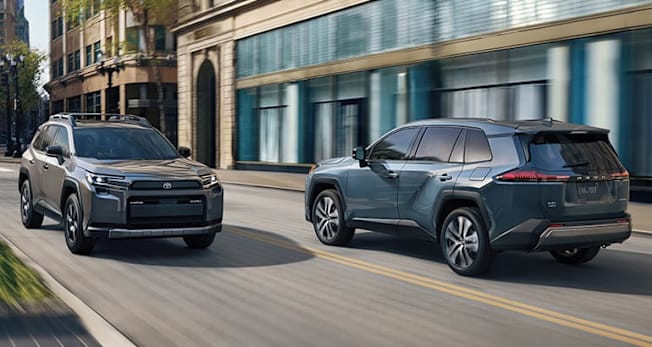
Photo: Toyota Photo: Toyota
CR's Take
The RAV4 has long defined the small SUV segment, and through the years, it has often been seen as a leader. Recently, fresher competition has knocked the RAV4 from its pedestal. Sure, it has remained a good all-around vehicle with impressive fuel economy and reliability. But the latest Honda CR-V, Hyundai Tucson, and Subaru Forester have advantages. (The RAV4 PHEV, with its greater power and smoother ride, continues to be a top-rated small SUV.) This shifting ranking is reflected not only in Consumer Reports’ road-test scores but also in the owner satisfaction ratings based on member surveys, where we see the RAV4 Hybrid earns a rating of just average.
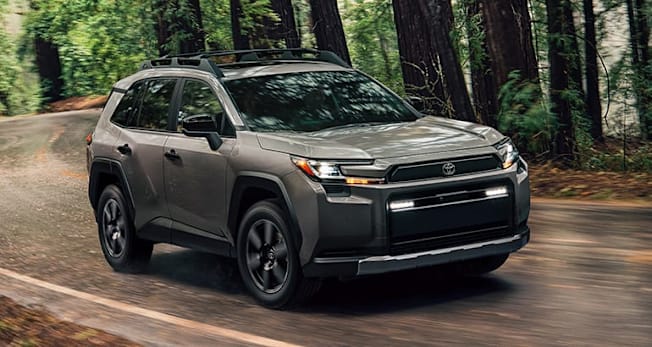
Photo: Toyota Photo: Toyota
Outside
The design is evolutionary, adopting many styling cues from existing models. There are familiar lines here and there without making it look derivative. The next effect is a more “trucky” appearance, with the addition of more straight lines than curves, and a flatter, less aggressive grille and headlight design.
The front ends are distinctly different among the Limited, Woodland, and GR Sport trims, a variation made more cost-effective by the RAV4’s mammoth sales volume.
Several colors carry over, and new ones have been added. Again, certain versions are available with a black roof, giving the XSE and GR Sport a more distinctive appearance.
The Woodland can be spotted by its horizontally split front grille, higher ride height, and all-terrain tires.
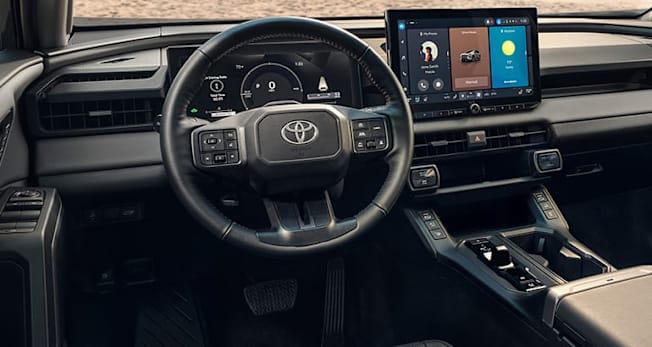
Photo: Toyota Photo: Toyota
Inside
With so many trims, there are many interior treatments available. All RAV4s have a 12.3-inch instrument panel that can display navigation guidance. The center infotainment screen is either a slim 10.5-inch screen or a 12.9-inch screen with onscreen controls for the climate system. We’re excited to try the new infotainment software because it appears to finally have a split-view home screen that should result in less menu jumping. A head-up display is available on the Limited hybrid and XSE PHEV.
A six-speaker stereo is standard, and there’s an available upgrade to a more powerful JBL system with eight speakers plus a subwoofer.
The stereo has dual Bluetooth capability, allowing two phones to be connected. It also comes with wireless Android Auto and Apple CarPlay. The native voice assistant is said to have improved responsiveness.
The seat upholstery spans from cloth to synthetic leather. The Woodland cabin has perforated soft-touch door and dash panels, red/orange accents, and branded all-weather floor and cargo mats. The GR Sport adds obligatory “GR” logos to the front headrests and steering wheel, as well as paddle shifters and aluminum pedals.
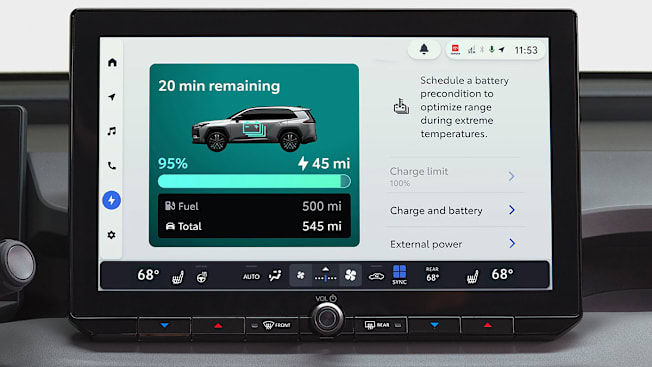
Photo: Toyota Photo: Toyota
What Drives It
The regular four-cylinder engine has been cast aside, leaving the 2.5-liter hybrid as the base powertrain. The hybrid produces 23 more horsepower than the previous base engine for 226 combined horsepower, and for the first time it’s available in a front-drive configuration. The AWD version has even more oomph, with 236 horsepower.
The plug-in hybrid powertrain gained 22 horsepower for 2026, raising its combined output to 324 hp. Previously, the PHEV was offered in two grades. It has now been expanded to four, adding the Woodland and GR Sport. All PHEVs are AWD.
Its electric-only range (before the gasoline engine must come on) has increased from a Toyota-claimed 42 miles to 50 miles, giving it one of the longest ranges of any current PHEV. This is enabled by using a bigger battery. (We were able to drive 42 miles on electric-only power in our tests of the previous-generation RAV4 PHEV, matching Toyota’s numbers.)
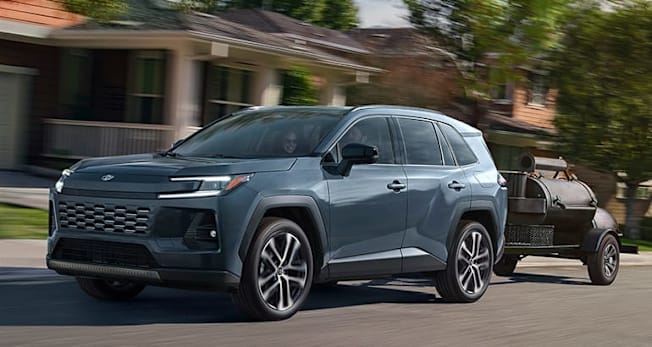
Photo: Toyota Photo: Toyota
DC fast charging at public chargers is unusual for a PHEV but welcome. Rather than the increasingly common NACS port, it’s routed through a CCS charging port on the XSE and Woodland, while the SE and GR Sport use a J1772 charging port. The prior 6.6-kW onboard charger has been supplanted by a higher-capacity 11-kW onboard charger, enabling more rapid charge times for Level Two AC charging.
All front-drive versions and the LE AWD have a 1,750-pound towing capacity. The XLE, Woodland, SE, XSE, and Limited hybrids, and the SE, XSE, and Woodland PHEVs with AWD can tow up to 3,500 pounds.
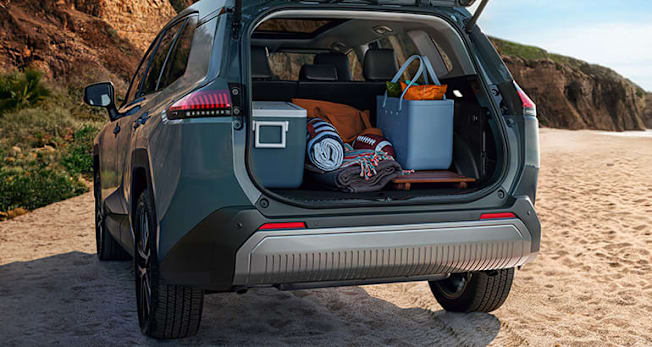
Photo: Toyota Photo: Toyota
Safety and Driver Assistance Systems
The new RAV4 is the first Toyota model to come with the Toyota Safety Sense 4.0 suite of safety and driver assistance features, which uses the Arene software platform. It should be a significant step forward over the TSS 2.5 in the outgoing model. Toyota explains that the suite is an advance over TSS 3.0 in other vehicle through improved sensors, among other things. TSS 4.0 includes the latest versions of automatic emergency braking with pedestrian detection, lane departure warning, lane keeping assistance, adaptive cruise control, and automatic high beams. In addition, they have standard blind spot warning, rear cross traffic warning, and a safe exit assist system, which monitors for passing vehicles before it allows passengers to open the doors.
Other recently announced models, such as the C-HR and bZ, include a five-year trial for connected safety services with an SOS button for emergency assistance, automatic crash notification, and a stolen vehicle locator. The same may be true for the new RAV4.
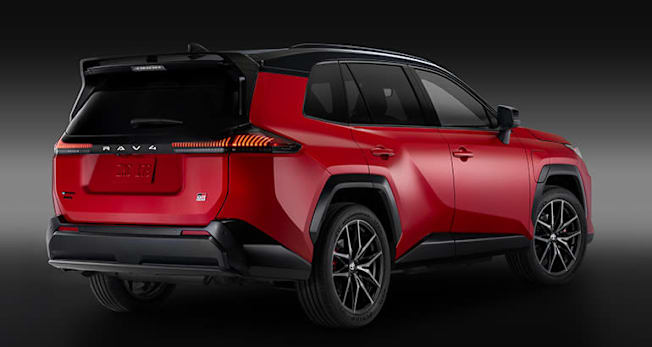
Photo: Toyota Photo: Toyota

















